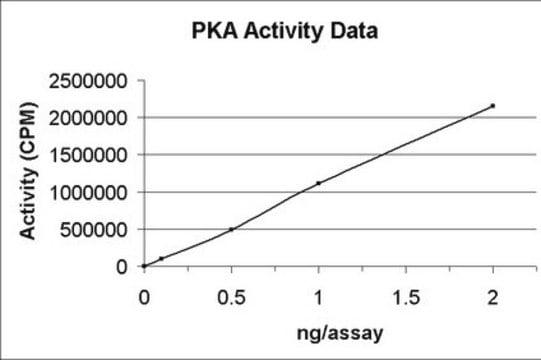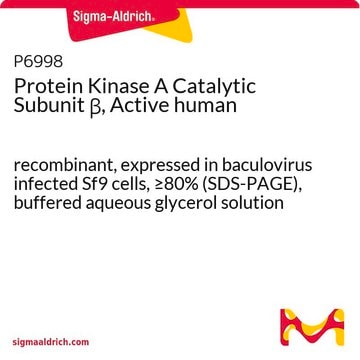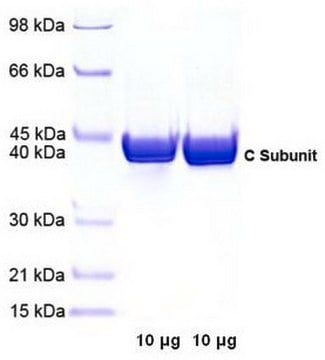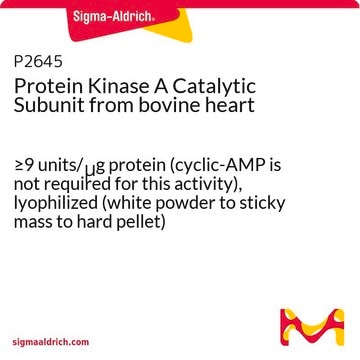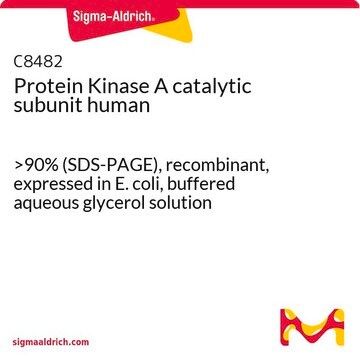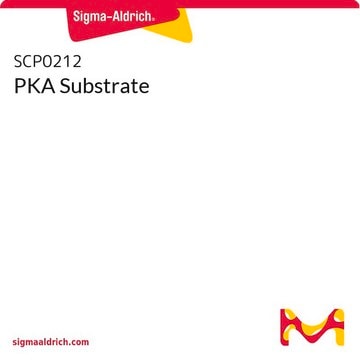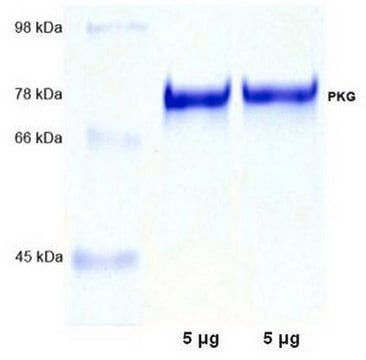539481-M
PKA, Catalytic Subunit, Mouse, Recombinant, E. coli
Sinónimos:
cAMP-Dependent Protein Kinase, Catalytic Subunit, Protein Kinase A, Catalytic Subunit
About This Item
Productos recomendados
Formulario
liquid
Nivel de calidad
actividad específica
≥2.5 x 106 U/mL
fabricante / nombre comercial
Calbiochem®
condiciones de almacenamiento
OK to freeze
avoid repeated freeze/thaw cycles
actividad extraña
Phosphatases, proteases, none detected
temp. de almacenamiento
−20°C
Descripción general
Advertencia
Definición de unidad
Forma física
Reconstitución
Otras notas
Lee, S-L. and Steinberg, R.A. 1996. J. Biol. Chem.271, 16553.
Adams, J.A., et al. 1995. Biochemistry 34, 2447.
Bosma, M.M., et al. 1993. J. Neurosci.13, 5242.
Brindle, P., et al. 1993. Nature364, 821.
Hajnoczky, G., et al. 1993. Biochem. J.293, 413.
Sculptoreanu, A., et al. 1993. Proc. Natl. Acad. Sci. USA90, 10135.
Wang, L-Y., et al. 1993. Science259, 1173.
Slice, L.W., and Taylor, S.S. 1989. J. Biol. Chem.264, 20940.
Uhler, M.D., et al. 1986. Proc. Natl. Acad. Sci. USA83, 1300.
Walsh, D.A., et al. 1968. J. Biol. Chem.243, 3763.
Información legal
Código de clase de almacenamiento
12 - Non Combustible Liquids
Clase de riesgo para el agua (WGK)
WGK 1
Punto de inflamabilidad (°F)
Not applicable
Punto de inflamabilidad (°C)
Not applicable
Certificados de análisis (COA)
Busque Certificados de análisis (COA) introduciendo el número de lote del producto. Los números de lote se encuentran en la etiqueta del producto después de las palabras «Lot» o «Batch»
¿Ya tiene este producto?
Encuentre la documentación para los productos que ha comprado recientemente en la Biblioteca de documentos.
Nuestro equipo de científicos tiene experiencia en todas las áreas de investigación: Ciencias de la vida, Ciencia de los materiales, Síntesis química, Cromatografía, Analítica y muchas otras.
Póngase en contacto con el Servicio técnico